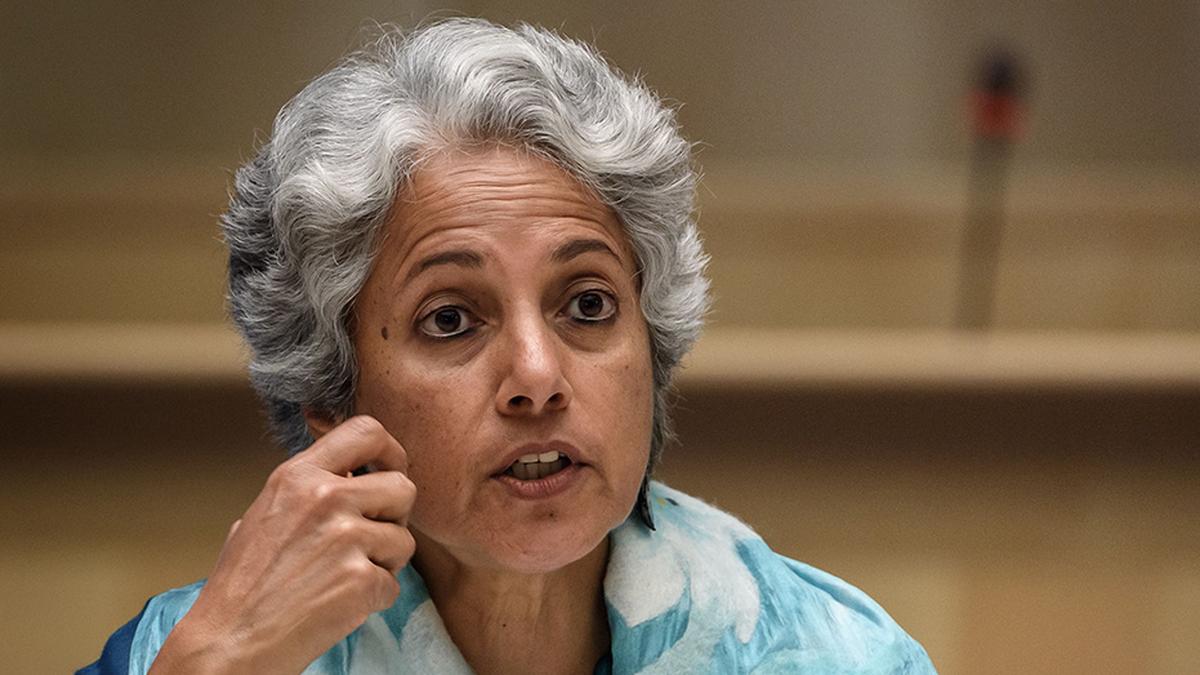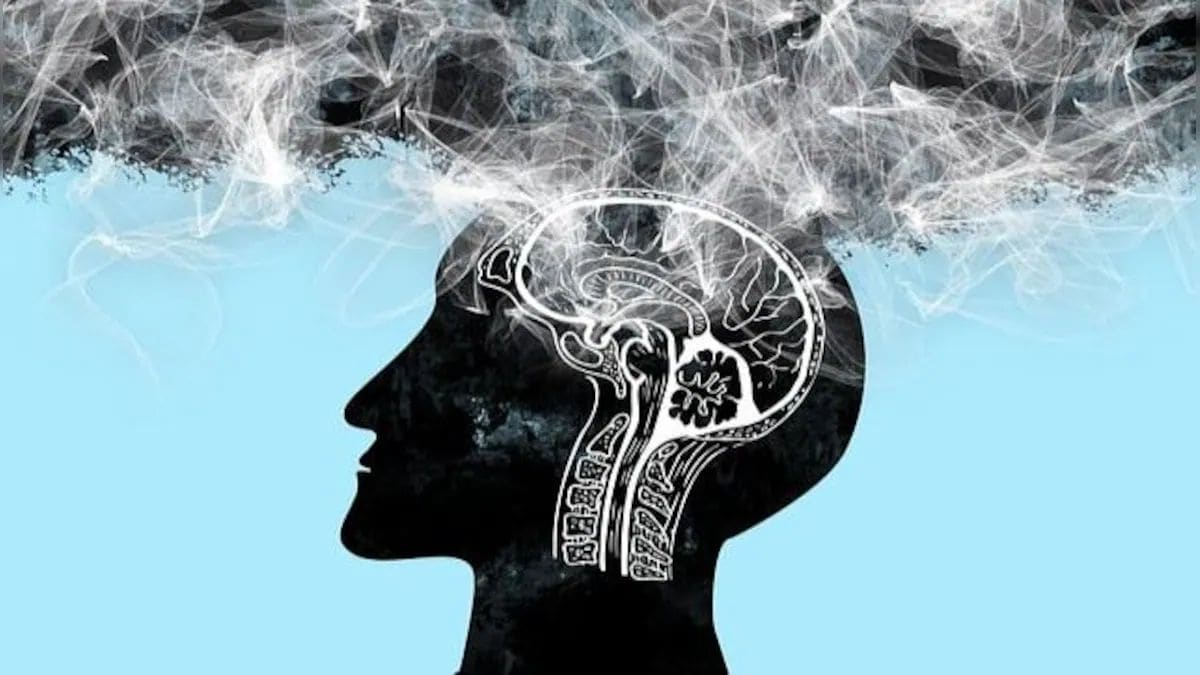TB infection can no longer be considered a binary — latent TB and active TB. People can also have TB disease and yet not display any of the characteristic symptoms associated with TB, such as cough. This is called subclinical TB.
The national TB prevalence survey (2019-2021) found 42.6 % of the TB cases detected were subclinical and would have been missed if a chest X-ray was not included. Recently, the Tamil Nadu TB prevalence survey found 39% subclinical TB cases.

Dr. Soumya Swaminathan , the Principal Adviser at the Health Ministry for the National Tuberculosis Elimination Programme (NTEP), talks about the various challenges in detecting subclinical TB cases and ensuring that such people begin and complete the treatment. Considering that both the national and the Tamil Nadu TB prevalence surveys have found the prevalence of subclinical TB to be high, can it be assumed that subclinical TB prevalence will be high in all high-burden States in India? Yes.
TB prevalence surveys done in high-burden countries in Asia and Africa have found a substantial proportion of subclinical TB, with the median being about 50%. Depending on how you define it and what symptom complex is used to define subclinical TB, the percentage varies from 30% to 80%. The high 80% is if you define subclinical TB as not having a persistent cough for more than two weeks.
What we are learning now from the meta-analysis of prevalence surveys done across high-burden countries is that there is a significant burden of subclinical TB in the community. In India, if you take the national TB prevalence survey, the TB prevalence of bacteriologically positive TB was estimated at about 300 per 100,000. But if you see the notification rates, the median for India is just 100 per 100,000.
It means that for every one patient who is notified to the programme, there are two others in the community who have culture-positive TB and not being detected, and who could be transmitting the infection. Subclinical TB could be the reason why the incidence of TB has been coming down so slowly, despite improving case notification and finding as many symptomatic patients as possible. So the focus has been on improving detection and diagnosis of TB in people who come with symptoms, and in treating them.
This has helped in reducing the mortality but where things have not changed is in the incidence. Globally, the incidence is going down by like 2% or 3% per annum, which is certainly not anywhere close to achieving any kind of elimination. So subclinical TB will need to be addressed if we are going to progress with the elimination goals.
Is there any high-burden country actively screening for subclinical TB cases as part of the TB programme? In Vietnam, there have been some very large-scale studies done across districts where they have screened the entire population, in what is called symptom agnostic screening. That means you do not worry whether people have symptoms or not, you go ahead and take an X-ray and collect a specimen for molecular testing. And there they found that by doing this annually for three years in that community, they were able to reduce TB prevalence by 50% compared with the control area.
So it means that by going into the community and screening everybody and treating all the TB cases you find can bring down the burden of TB significantly in the community. There have been such demonstration studies, but I am not aware of any country that is doing it as part of the national TB programme. How challenging will it be to get seemingly healthy people to undergo a chest X-ray for TB screening? I think for this to be done at scale, one will obviously need a different kind of approach and strategy because so far we have been telling people with symptoms to get tested.
A study that was based on the analysis of data from the Indian TB prevalence survey found that people who actually showed up at the health centers came not because of persistent cough but because they started having weakness, anorexia, fatigue, or weight loss. If you want to move away from that approach or combine it with an approach where regular camps are held with mobile units equipped with handheld X-ray units. TB screening can now be also incorporated into programmes and you could screen everybody with an X-ray.
How difficult will it be to convince people with subclinical TB to begin and complete the treatment? Yes, it is quite difficult to tell somebody who does not have many symptoms that they are ill and they have to take treatment for six months. While studies have shown that people with less symptoms who are started on treatment have better outcomes and their mortality is less, their dropout rates tend to be higher. So this is where you would really have to explain and spend a lot of time in counselling, education, follow-up and tracking.
So that would have to be built in. Of course, you will be starting much larger numbers of people on treatment. So it would mean probably more workforce also.
Like in the case of HIV, you know even if you are asymptomatic, you get started on medication because you understand the benefits. Similarly, one could explain that if you have subclinical TB today, and tomorrow you get really sick, your lungs can get damaged, thus encouraging them to get treated at an earlier stage. How do you deal with chest X-rays that show abnormalities that are not caused by TB? When you screen everybody with an X-ray, you will find a proportion of people with an abnormality.
Then you must be prepared to track and diagnose them. Some of them could have TB, but some of them could have other diseases, including cancer or other chronic diseases. So there must be a referral system in place and there must be a mechanism to treat those people because you cannot just screen and then leave them as that would be unethical.
The other way is to go and screen with a molecular test. For example, if you take specimens from everybody and do a CBNAAT instead of an X-ray, then you will find only the TB cases. Of course, the cost effectiveness of all these things have to be looked at.
But the point here is that for us to be able to ultimately control and eliminate TB, and what we are doing today is probably not sufficient. Can a State focus on high-risk populations such as household contacts or use it for active case-finding so that the entire population is not subjected to chest X-ray? No, that is not going to be as effective. Even today, as per the policy, all household contacts are supposed to get symptom screening and X-ray, and only then they are supposed to receive preventive therapy.
That is the current WHO policy, which is also implemented in India. Now, these prevalence surveys have shown that the majority of your patients whom you are detecting come from the general population and not the household contacts. There are multiple risk factors such as undernutrition, alcohol use, and diabetes.
So if you were to really do this approach to find everybody in the community, you will have to go screening everyone. It is really a very big exercise to be undertaken for a country like India. But maybe you could start with the high-burden districts.
For example, we know that most of our tribal and most of the aspirational blocks are likely to have the higher incidence of TB because they have higher malnutrition and other risk factors. So one could start with that or in a very high density, urban, low-income population. So if one cannot go to the whole country, certainly one could have an approach like this.
How aware is the Central TB Division of the high prevalence of subclinical TB cases in the population, and is it planning to address the problem? This concept is now gaining traction, and only in the last couple of years you see a lot of papers talking about subclinical TB, and the fact that there is a continuum of disease. There is something called incipient TB, which actually does not even have any does not have symptoms and you may not even be able to detect it using the current diagnostics. Then you get into subclinical TB which you are actually able to detect through X-ray or through a molecular test, and then you get into a full-blown symptomatic TB.
This continuum concept is now gaining traction. In India, we have progressed to active case finding using different strategies, but not this community-wide screening. Now this would be a new one, and we will have to rethink.
I think it is going to need some implementation research because you have got to look at different strategies. You have got to look at the cost effectiveness, feasibility, and then only you will be able to take it to the programme. Will it be possible to begin screening for subclinical TB by focussing on a small population or high-risk or high-burden populations? In the prevalence surveys, it was not the high-risk groups but the general community where they found a high number of subclinical TB cases.
In the past, whenever we have tried to focus on high-risk groups, it has worked like the mobile medical units vans equipped with X-rays that have gone into tribal areas. The Piramal Foundation, Piramal Swasthya, had a massive programme where they went into many tribal areas and screened something like 10 million people with X-rays and they found, if I remember correctly, 10,000 TB patients. Now, how many of them were symptomatic, asymptomatic, I don’t know.
But if you go into the areas where we know there is a significant burden and you screen people, you are going to find patients. So you focus on high-risk populations. For instance, many northern States, including Delhi, have TB prevalence way above the national average, and also cities like Mumbai which have a peculiar urban phenomenon where people are living in such close proximity.
In such places, I think it makes a lot of sense to go in and do this, but you would have to keep doing it. You know, it is not a one time thing. If not every year, at least once in two years, once in three years, you would have to go in and screen everybody.
Like in the case of latent TB, can a person with subclinical TB remain as such without progressing to TB disease or can the person even revert to a healthy condition after some time? Yes, that is what is now being proposed. What you have is this continuum from no infection to infection which is latent then becomes incipient subclinical and clinical, and then the arrows go both ways. So, we know that in the pre-chemotherapy era about a third of patients used to get self-cured.
Even those who were sick enough to be admitted to the sanatorium, one-third would get cured. So self-cure in TB has been known historically. So, it is very likely that subclinical TB also has a significant proportion that gets cured.
Now, the issue really is we do not know what proportion that is — how many progress to active TB and how many get cured — and what are the risk factors? Secondly, if they are infectious during that time. We know SARS-CoV-2 is an airborne infection, and we also know that it is not only cough but it is also just talking, breathing, singing, shouting, laughing that can spread the virus. Therefore, people with subclinical TB will be posing a significant risk in the community.
So from a public health point of view, they will continue to fuel the epidemic, though from a personal point of view, all of them may not actually become sick and some of them could self-cure. Are people with subclinical TB infectious and spread the bacteria to others? It is a very high likelihood that people with subclinical TB can be infectious. In some of these prevalence surveys, some of these people who did not have symptoms had smear positive disease.
And some of them had a high bacillary burden. Therefore, if they are smear positive it means that they do have bacteria which you know are coming out of their breath, and even if they don’t have a cough, they can still be transmitting it. And that could actually explain why the incidence is not coming down even in countries which are running good TB programmes.
There are studies which prospectively have followed [people with subclinical TB]. But ethically, when we have good anti-TB treatment, you won’t be able to keep these people without treatment. So to prove that they are infecting others will be difficult.
But I think what is possible is to do genetic fingerprinting to see who is, from where did they get infected from. How close is the Central TB Division in recommending the use of AI-based chest X-rays for TB screening? There were multiple companies that had applied to the ICMR for validation of their AI algorithms. The ICMR committee that screens for innovations had actually approved two companies and the health technology assessment was also done.
Considering that molecular testing has not become the first tool for TB diagnosis and over-reliance on smear microscopy continues, how long will it take for the use of chest X-ray for screening to become a reality? Very soon. Our goal now is to really go from the 30% of molecular testing that we are today to 100% within the next 12 months. That is my goal anyway, and that is also the CTD’s goal.
Now, this, of course, means that we will have to use a combination of equipment. Of course, we have TrueNet, we have GeneXpert. We also have PCR machines in many labs in many States right during COVID-19.
ICMR is now validating the open PCR kits. If one or two of them are found to be good with good sensitivity and specificity, then we can also deploy those PCR machines. We may have to increase the time that a machine is being used.
For example, you can deploy more lab technicians and run those machines for two shifts instead of one shift to double the capacity. The CTD is now undertaking a detailed exercise to map the diagnostics. It is what is called the diagnostic network optimisation, which looks at the where the machines are, and also looks to see whether they can be redistributed within a district.
It also looks to see how sputum collection and transportation can be streamlined as the goal is to reduce the distance to be travelled by the patient or by the sputum sample to reduce the time taken. Also, all presumptive TB cases must get an upfront molecular test. You know unless we do that we are not going to be able to reduce the morbidity and mortality due to TB.
So, that is the number one priority right now for the CTD. Following that we are also looking at these X-ray units. The procurement has to be done for the AI-based software, but it will happen.
Once that happens, then this will also get rolled out and can be used for a lot of community-based screening and active case finding. If the TB programme makes a jump start with upfront molecular tests and use of X-rays, more cases will be detected. Is the Central TB Division prepared for uninterrupted drug supplies? So they are looking at procurement very systematically and seriously now so that we don’t face the problems that we faced in the last two years ever again.
There is going to be a lot of work which has already started to get both drug-sensitive and MDR-TB drugs. As you know, we are moving to the BPAL regimen soon. The one thing that I think we are going to need, which is always contentious, is the human resources.
We are always trying to manage with the same number of health staff, and we give them more and more work and activities. I think that is not sustainable. And I believe that during the pandemic, every State government recruited additional staff.
It was possible to do because it was an emergency. If we think that TB is an emergency and we are serious about eliminating it or at least first controlling it, then we have to do something similar to what we did for COVID-19. We have to mobilise resources, human resources, PCR machines, massive community education, and risk communication.
So I think we have to treat it like what it is actually — a public health emergency. It is just that we don’t treat it as a public health emergency today because it has always been there with us. So I believe it is possible with the tools and technologies, but it is going to take that increased political will and resources to achieve our goals.
Copy link Email Facebook Twitter Telegram LinkedIn WhatsApp Reddit tuberculosis.

















